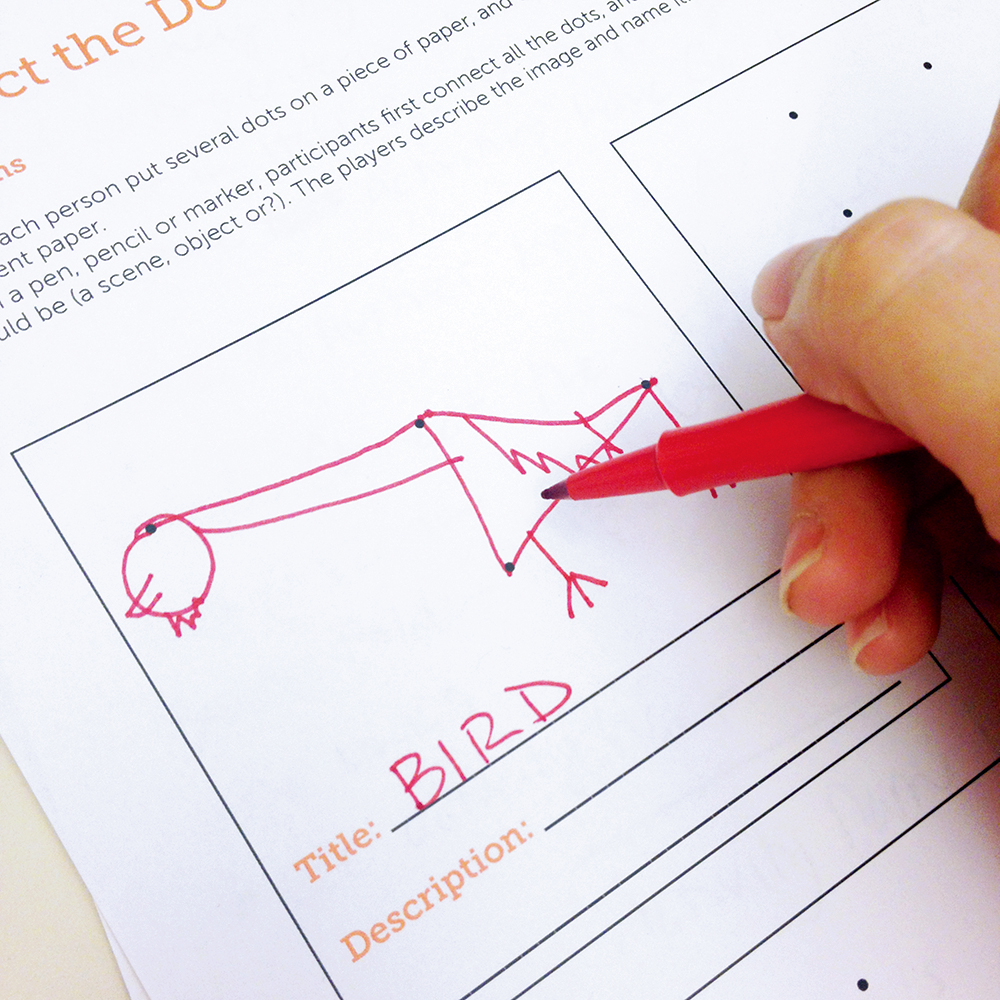Try this fun spin on connect the dots! In this group activity, children put several dots on a piece of paper and then the next person connects the dots to create an image. This extension of the age-old connect-the-dots game helps children develop the ability to see abstract images in seemingly random patterns. This activity is a mental flexibility exercise that focuses on dots, but helps children practice making connections between ideas.
Materials Required
- Blank paper
- Pen, pencil, or marker
Instructions
- Have each person put several dots on a piece of paper. Then pass the paper to the person on the right so that each person gets a different paper.
- With a pen, pencil or marker, connect all the dots.
- Next, imagine what the connected dots could be! What object or scene appears? Describe the image and name it.
Additional Tips
Accept all drawings. Be careful not to critique the quality of the drawing or whether the drawing looks like what it is intended to be (e.g. if an artist says the drawing is a guitar, accept it). Consider beginning by asking the participant, “Tell me about your drawing.”
Try this activity variation:
- Photocopy the same sheet of random dots and give to a group of participants. Have each person do the activity on his or her own. See how many different ideas and images are generated from the same set of dots.



